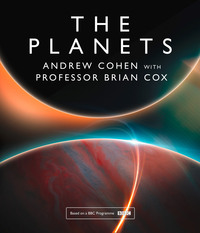
The Planets

ANDREW COHEN
WITH
PROFESSOR BRIAN COX
THE PLANETS

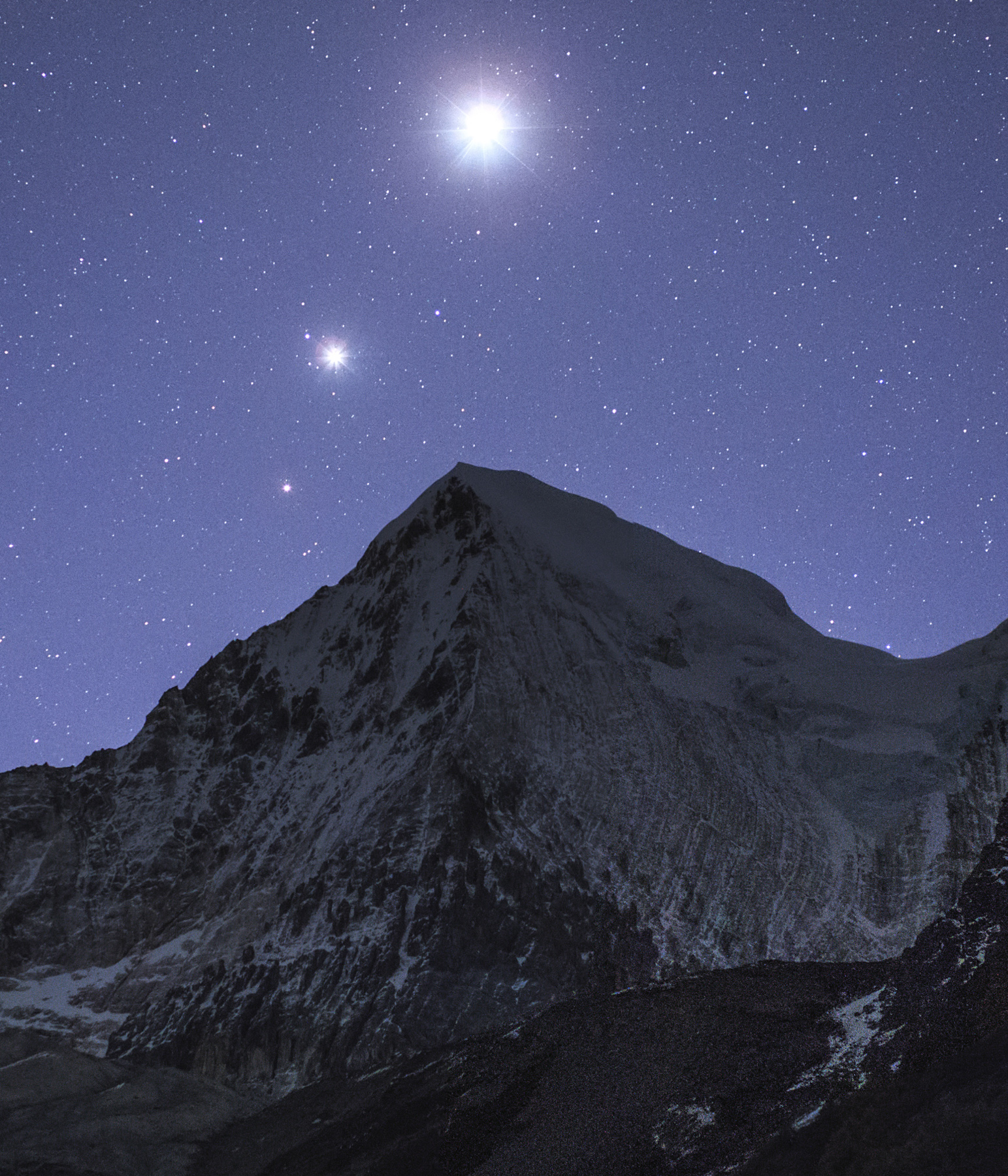
© JEFF DAI / SCIENCE PHOTO LIBRARY
COPYRIGHT
William Collins
An imprint of HarperCollins Publishers
1 London Bridge Street
London SE1 9GF
WilliamCollinsBooks.com
This eBook edition published by William Collins in 2019
Text © Brian Cox & Andrew Cohen 2019
Images © Individual copyright holders
Diagrams © HarperCollinsPublishers 2019
By arrangement with the BBC
The BBC logo is a trademark of the British Broadcasting Corporation and is used under licence
BBC logo © BBC 2014
Brian Cox and Andrew Cohen assert their moral right to be identified as the authors of this work in accordance with the copyright, Designs and Patents Act 1988
Jupiter cover image: NASA/JPL/Space Science Institute
All other cover images: Shutterstock
A catalogue record for this book is available from the British Library.
All rights reserved under International and Pan-American Copyright Conventions. By payment of the required fees, you have been granted the non-exclusive, non-transferable right to access and read the text of this eBook on-screen. No part of this text may be reproduced, transmitted, downloaded, decompiled, reverse engineered, or stored in or introduced into any information storage and retrieval system, in any form or by any means, whether electronic or mechanical, now known or hereinafter invented, without the express written permission of HarperCollins Publishers.
Source ISBN: 9780007488841
Ebook Edition © April 2019 ISBN: 9780008313470
Version: 2019-05-17
TO ANNA – AMONGST THE VASTNESS OF THIS STORY HOW LUCKY AM I TO HAVE FOUND YOU.
ANDREW COHEN
CONTENTS
COVER
TITLE PAGE
COPYRIGHT
DEDICATION
SOLAR SYSTEM
AN INTRODUCTION
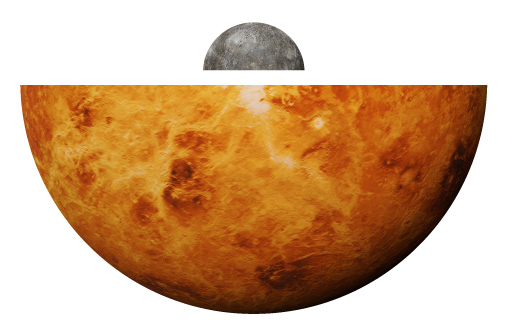
© pg005 Shutterstock
MERCURY + VENUS
A MOMENT IN THE SUN

© pg005 Shutterstock
EARTH + MARS
THE TWO SISTERS
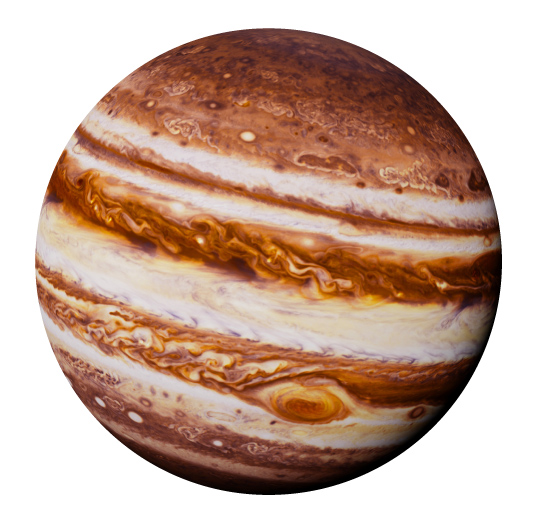
© pg005 Shutterstock
JUPITER
THE GODFATHER
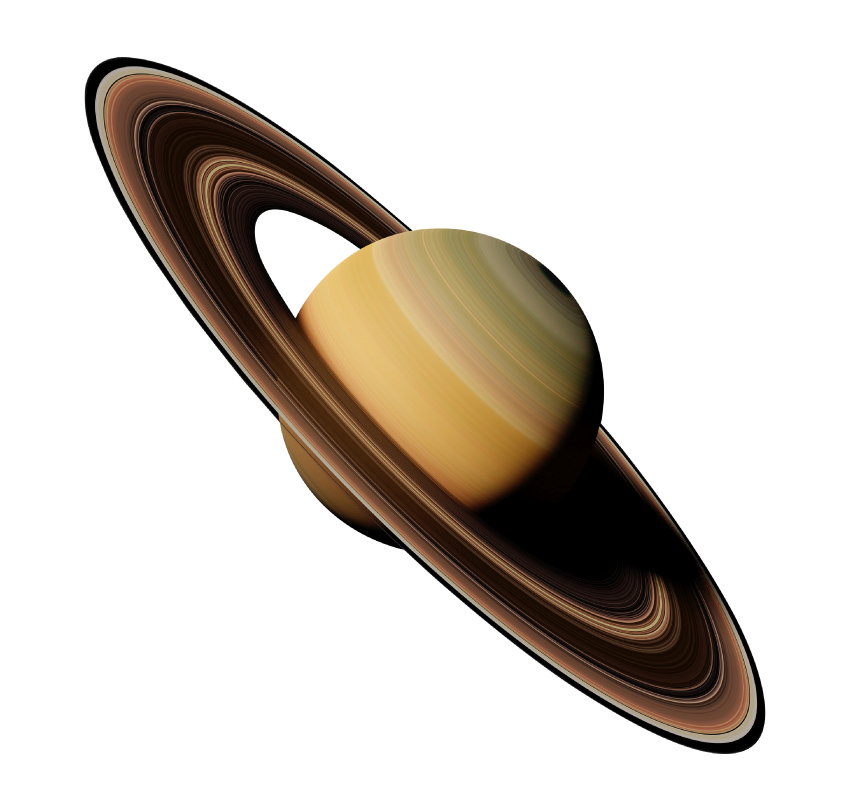
© pg005 Shutterstock
SATURN
THE CELESTIAL JEWEL
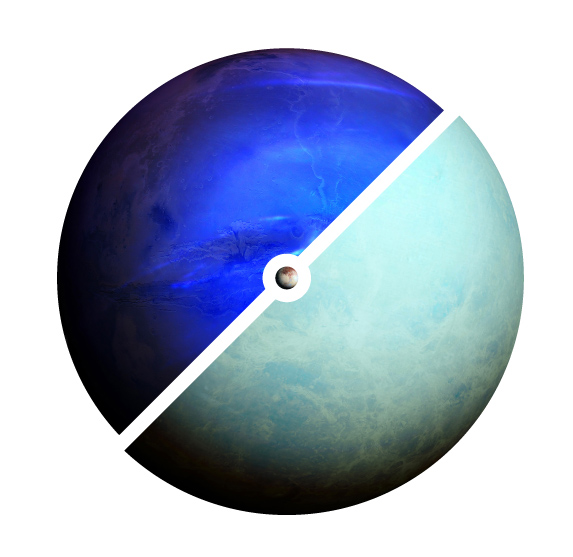
© pg005 Shutterstock
URANUS NEPTUNE PLUTO
INTO THE DARKNESS
INDEX
ACKNOWLEDGEMENTS
ABOUT THE AUTHOR
ABOUT THE BOOK
ABOUT THE PUBLISHER
AN INTRODUCTION
SOLAR SYSTEM
PROFESSOR BRIAN COX
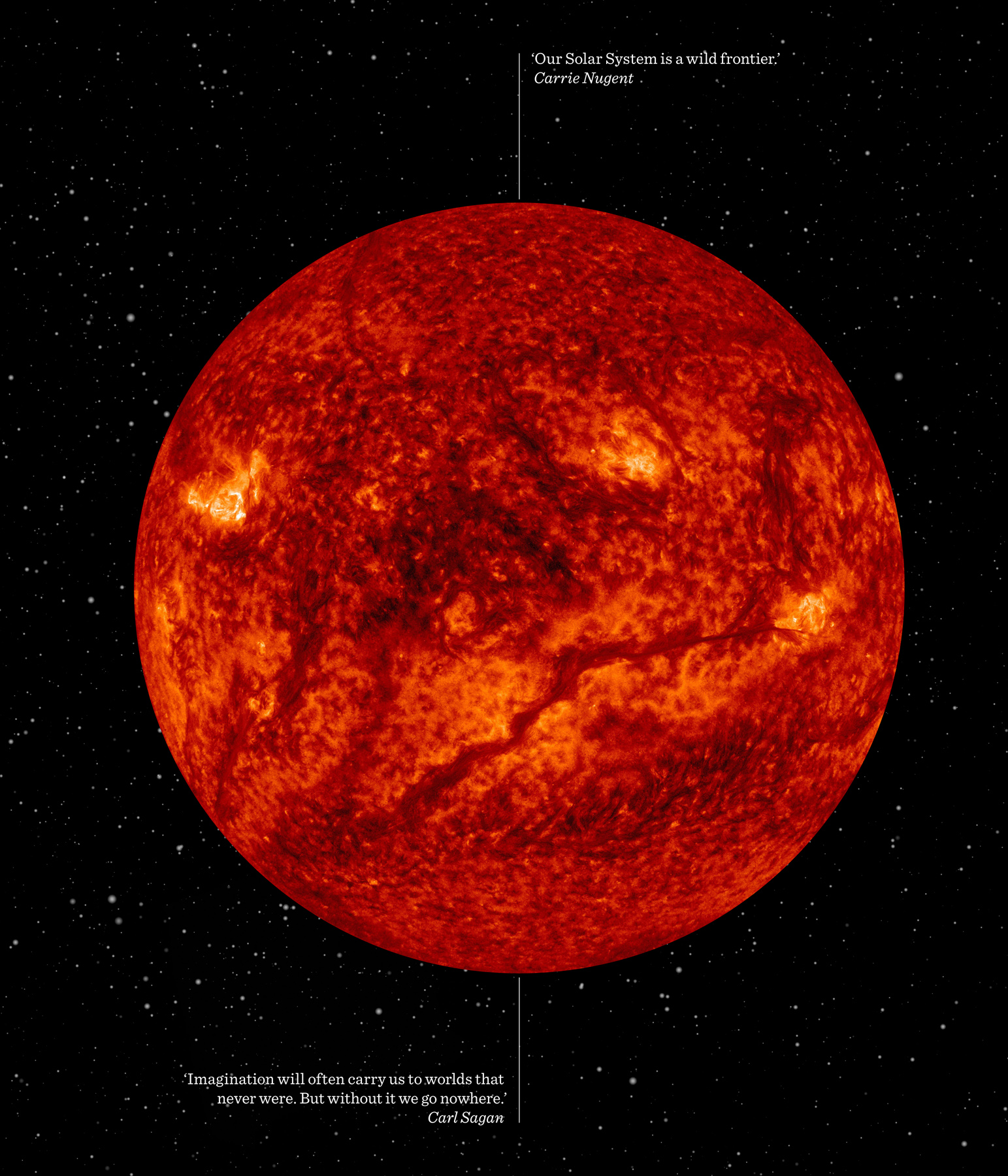
© Shutterstock
WANDERING LIGHTS
In the daytime, our universe stretches only as far as the horizon. The Sun hides in plain sight because it is too bright for us to see it directly. Only rarely do we glimpse a watercolour moon. Unless we think hard, our intellects are confined to the surface of the Earth. After sunset, beyond cities, the Universe appears; a destination for the imagination, albeit separated by a seemingly unbridgeable gulf. This may be true for the stars, but it is not so for the planets. There are times when Mars, Venus, Jupiter and Saturn dominate the sky; bright lights that shift position nightly against the fixed stars, commanding our attention even if we aren’t certain what we’re looking at. The distances are still vast by terrestrial standards, but despite appearances the gulf is certainly not unbridgeable, because we have visited all of these planets and taken our first steps into the outer reaches of the Solar System beyond. And yet the wandering lights in the dark still feel detached from human affairs, and the time and effort we’ve spent in visiting them might seem to be an indulgence. This assumption, however, is profoundly wrong.
The exploration of the planets is not an indulgence. If we want to know how we came to be here we need to understand the histories of the planet that gave birth to us and the system that gave birth to it. We are children of Earth and also children of the Solar System.
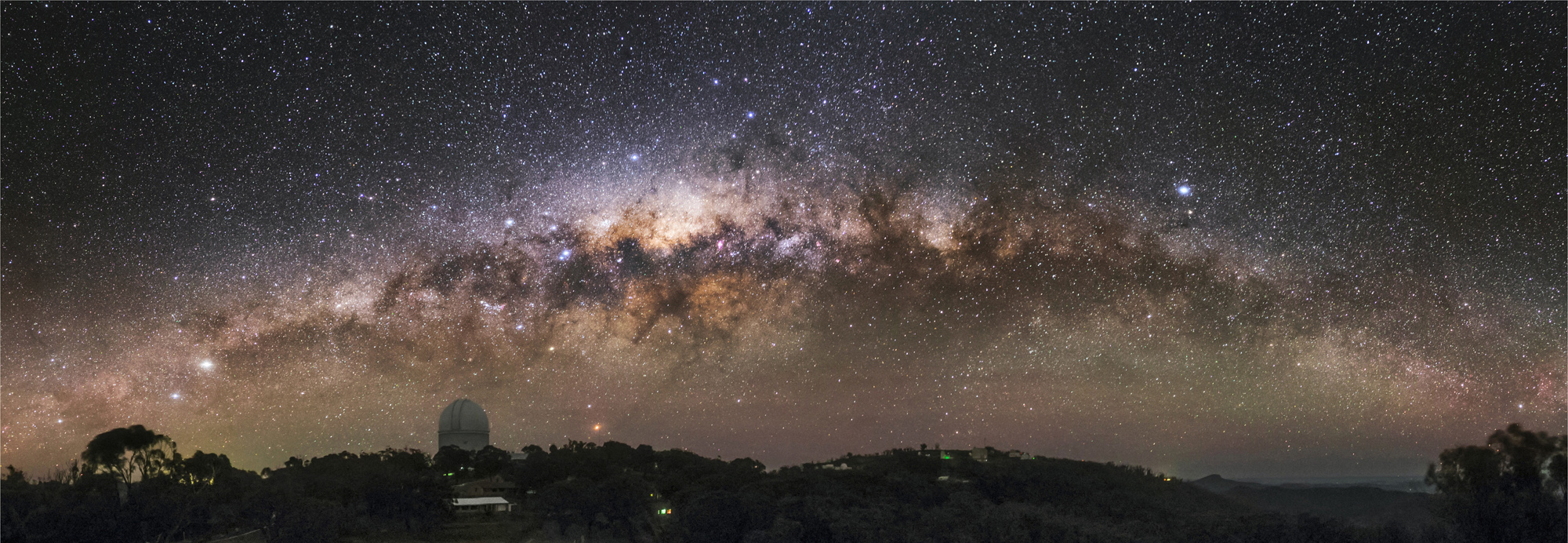
© BABAK TAFRESHI / SCIENCE PHOTO LIBRARY
The Milky Way in the night sky over Sliding Spring Observatory, New South Wales, Australia.
The Solar System is a system. The Sun and the eight major planets and countless billions of minor planets, moons, asteroids, comets and unclassified lumps of ice and rock were formed back in the mists of time and they continue to evolve as one. We rarely notice the dynamic, interconnected nature of our system, although asteroid strikes on our planet are not such a rare occurrence. The Chelyabinsk impact in February 2013 injured 1,500 people when a 12,000-tonne asteroid broke up as it entered the Earth’s atmosphere at 60 times the speed of sound, and the Tunguska airburst in Siberia in 1908 flattened 800 square miles of forest in an explosion comparable to that of the most powerful hydrogen bomb ever tested. The surface of the Moon bears testament to a record of violence and destruction from the skies that the Earth has also endured, but the relentless erasure of craters by weathering and our good fortune that no major impacts have occurred in recorded human history are the reason for our misplaced sense of isolation from the heavens.
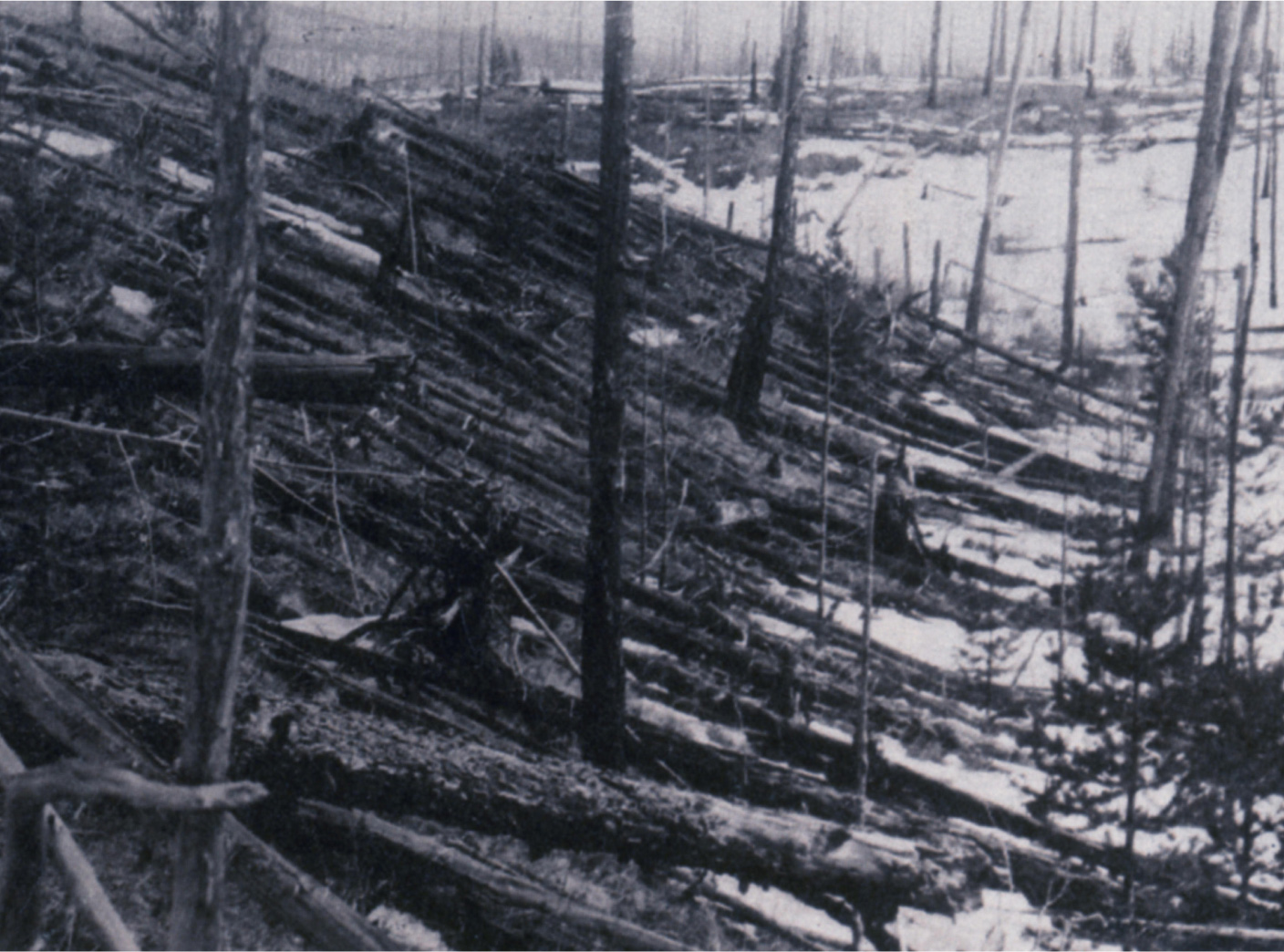
© Science History Images / Alamy Stock Photo
The Tunguska airburst of 1908 is the largest impact event on Earth in recorded history. It flattened 800 square miles of forest.
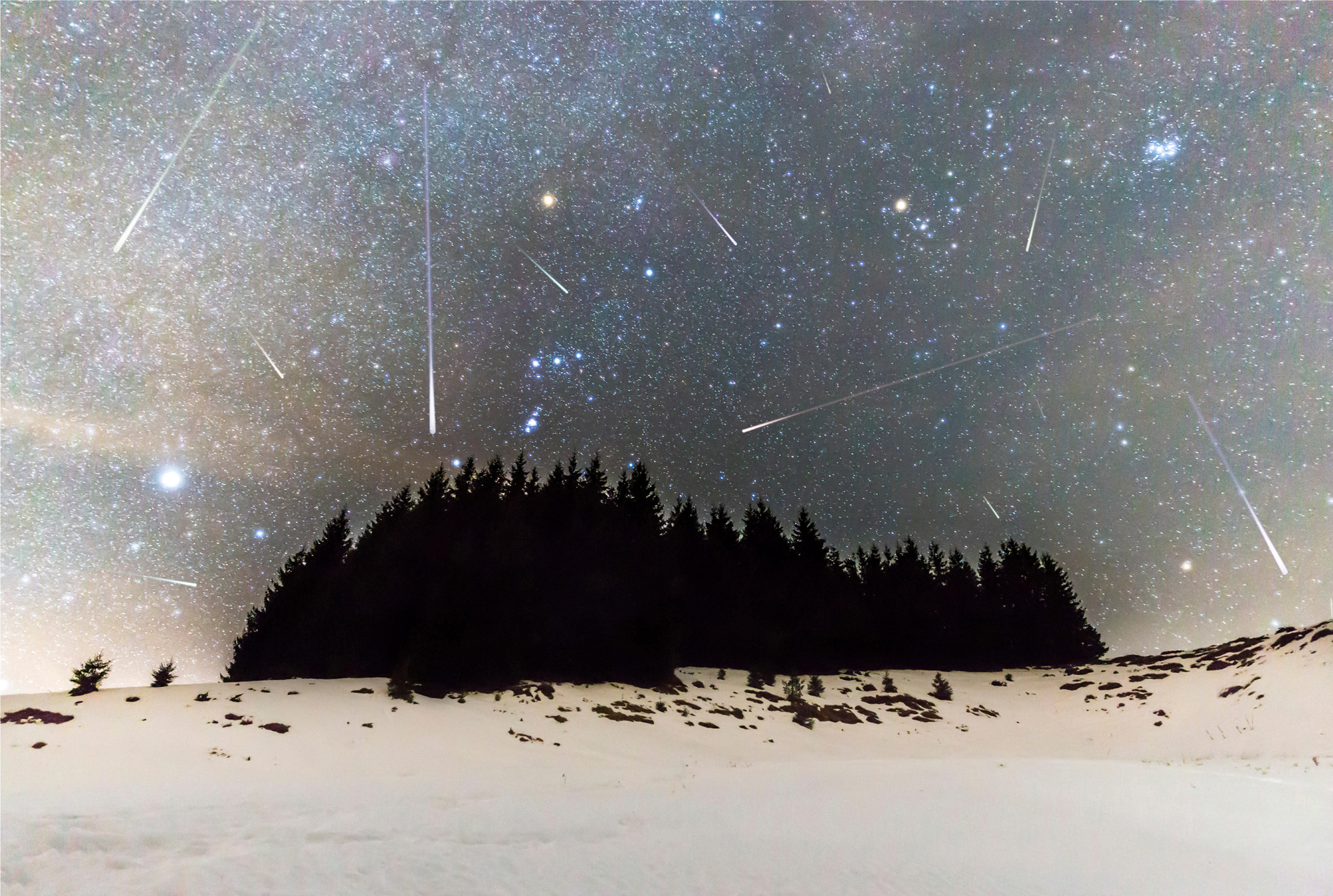
© Pluto / Alamy Stock Photo
Meteor showers are not uncommon, but as most meteors are smaller than sand grains, they disintegrate before hitting the Earth’s surface.
The interdependent nature of the Solar System has become more evident as we have begun to understand its history. It is tempting to imagine that the physical layout of the planets is a fossilised remnant of primordial patterns in the collapsing dust cloud around the newly ignited Sun 4.6 billion years ago, but our exploration of the planets, coupled with increasingly powerful computer simulations of the evolution of the Solar System, has revealed that this is not the case. Planetary orbits are prone to instability; particularly so in the early, more chaotic years when our Solar System was young. The details of precisely how the planetary orbits have shifted are still uncertain, but we now suspect that Mercury, the innermost planet, began life much further out and was deflected inwards to its present-day seared orbit. Jupiter and Saturn may have drifted inwards shortly after their formation, before reversing their course and retreating, but not before affecting the distribution of material out of which Mars and Earth would later form. Around the time that life began on Earth, Neptune and Uranus may have been flung outwards, disrupting the orbits of billions of smaller objects far from the Sun. The record of this time of unprecedented violence, known as the Late Heavy Bombardment, is written across the scarred surface of the Moon, itself most likely formed in a glancing interplanetary collision between Earth and a Mars-sized planet 4.5 billion years ago. The planets are like snowflakes; the detail of their structure – their composition, size, spin and climate – are a frozen record of their past.

© SPUTNIK / SCIENCE PHOTO LIBRARY
Two views of the Chelyabinsk meteor fireball caught on camera in 2013.
An understanding of the planets beyond Earth is therefore a prerequisite for understanding our home world, and that in turn is a prerequisite for understanding ourselves. Earth is unique in the Solar System because it is a planet with a complex ecosystem. The genesis and subsequent 4-billion-year evolution of life on Earth required planetary characteristics which are necessarily linked to the evolution of the system as a whole. There had to be liquid water on the surface, and much of this water was delivered after the Earth’s formation by icy, water-rich asteroids and comets, possibly deflected inwards from the outer Solar System by Jupiter. These rivers, seas and lakes of extra-terrestrial origin had to persist for the best part of 4 billion years, which required a stable atmosphere to maintain surface temperatures and pressures within a limited range. Four billion years is a long time – around a third of the age of the Universe. The Sun has brightened by 25 per cent since the Earth formed, which makes the stability of our environment all the more difficult to understand. In a chaotic system of planets around an evolving star, a planet with life-supporting properties and the remarkable stability enjoyed by Earth over billions of years may be extremely unusual. The study of our sister worlds, Mars and Venus, has proved instructive in understanding just how fortunate we may have been and how delicate our position today might be.

© PLANETARY VISIONS LTD / SCIENCE PHOTO LIBRARY
Satellite image of the Earth, centred on the Pacific Ocean. Water dominates this hemisphere of the Blue Planet.
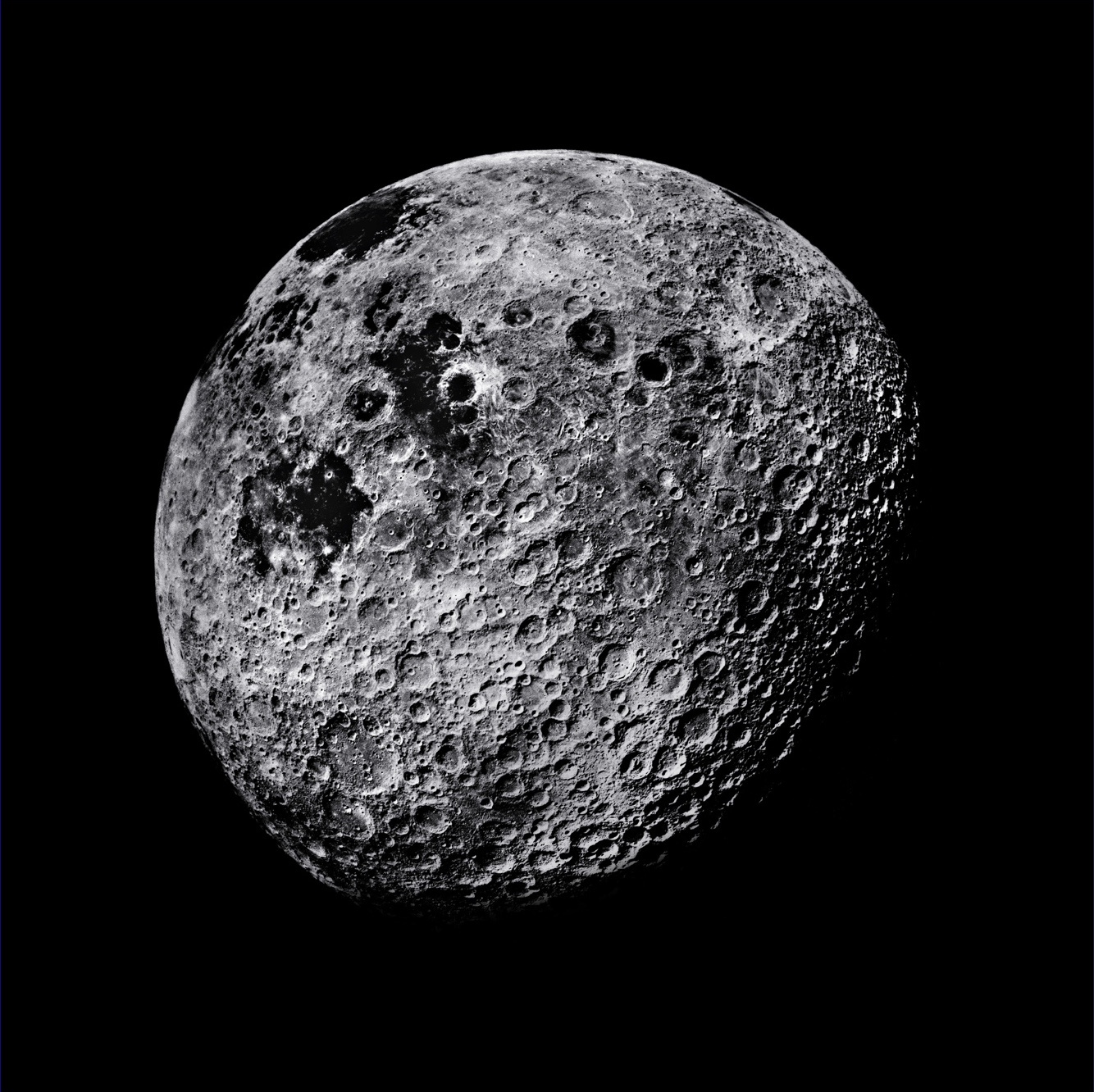
© NASA / SCIENCE PHOTO LIBRARY
The far side of the Moon bears the scars of the Late Heavy Bombardment. Photographed from Apollo 16 in 1972.
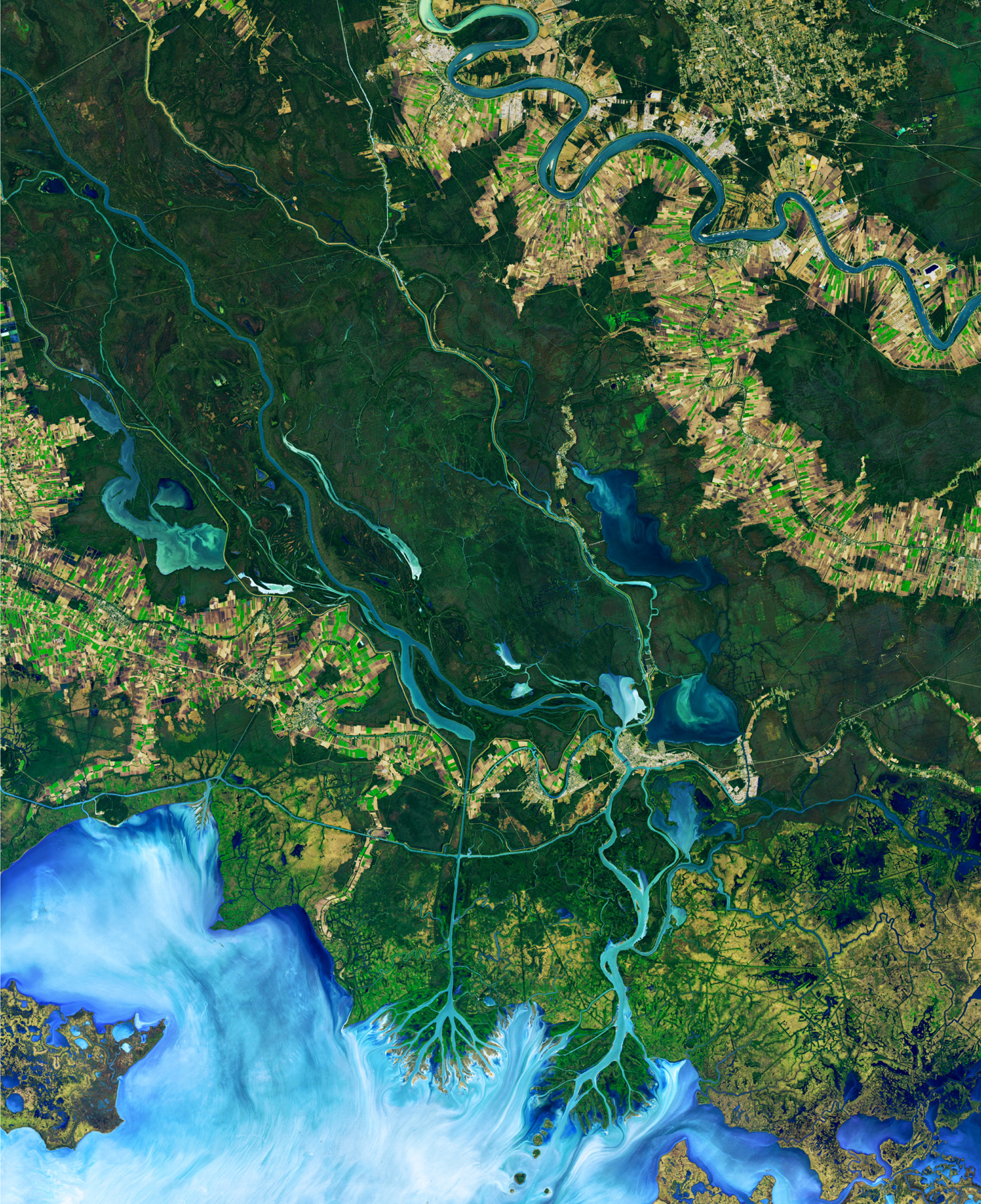
© NASA/JPL-Caltech/Univ. of Arizona
This colour-enhanced satellite photo of the Mississippi River Delta shows a lush, watery landscape.
Four billion years ago, as life began on Earth, Mars was also Earth-like.
Four billion years ago, as life began on Earth, Mars was also Earth-like. It had oceans and rivers and active geology and complex surface chemistry; the ingredients of life. One of the primary goals of the fleet of spacecraft currently in orbit around and exploring the surface of Mars is to search for evidence of past or even present life, and to understand why the red planet was transformed from a potential Eden at the dawn of the Solar System to the frigid desert world we observe today. The story is complex, but one of the most important differences between the two worlds is size. Mars is just one-tenth the mass of Earth; too small to hang on to its internal heat, its protective magnetic field and its atmosphere for much more than a billion years after its formation. Yet Mars formed in a similar region of the Solar System to Earth and Venus, so why is it so small? The answer may lie in the fast-changing orbits of Jupiter and Saturn early in the Solar System’s history. These surprising findings will be explored later in this book.
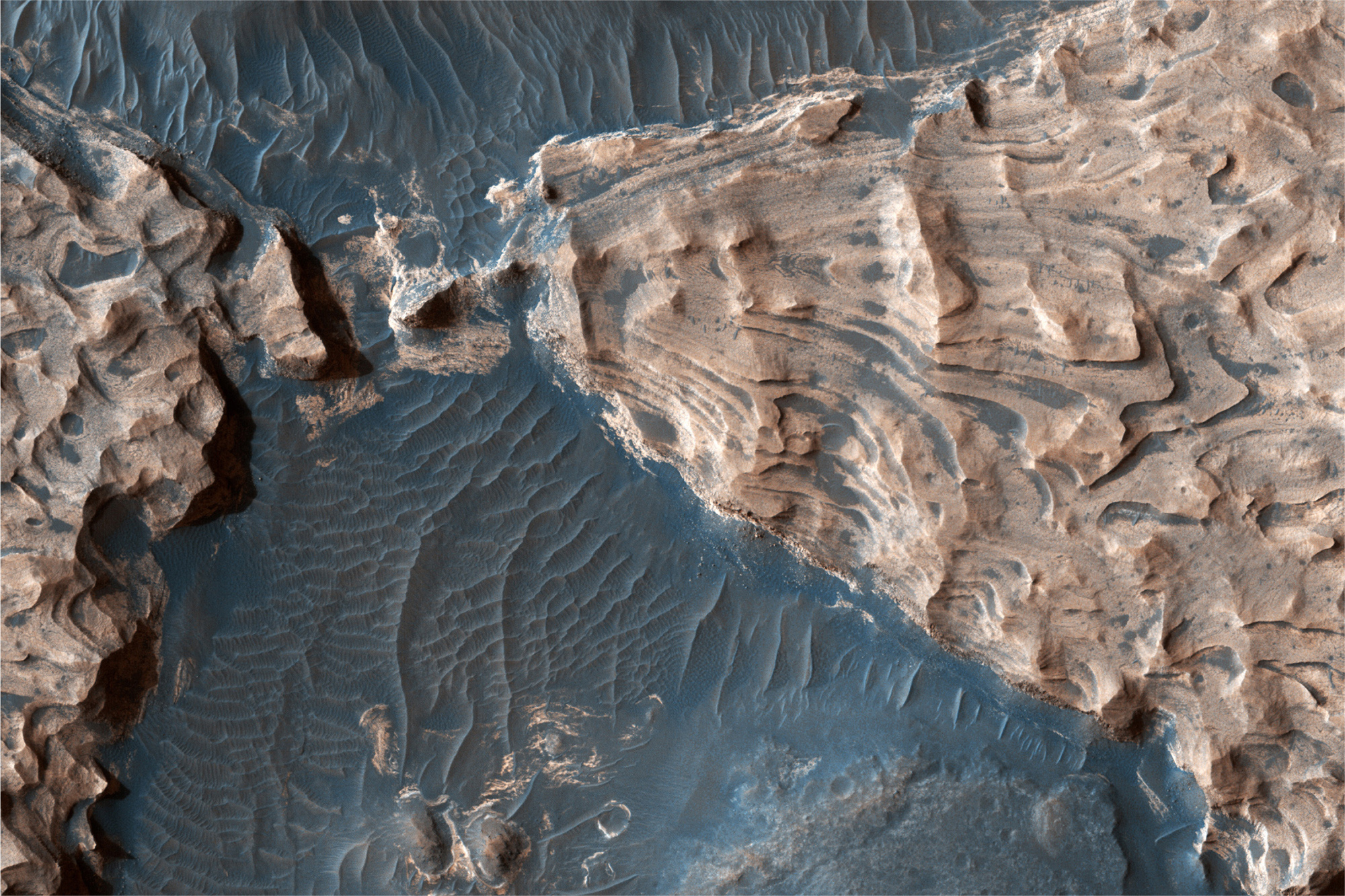
© NASA Earth Observatory images by Joshua Stevens
NASA’s Mars Reconnaissance Orbiter captured this photograph of Aram Chaos, an ancient impact crater that once held a lake.
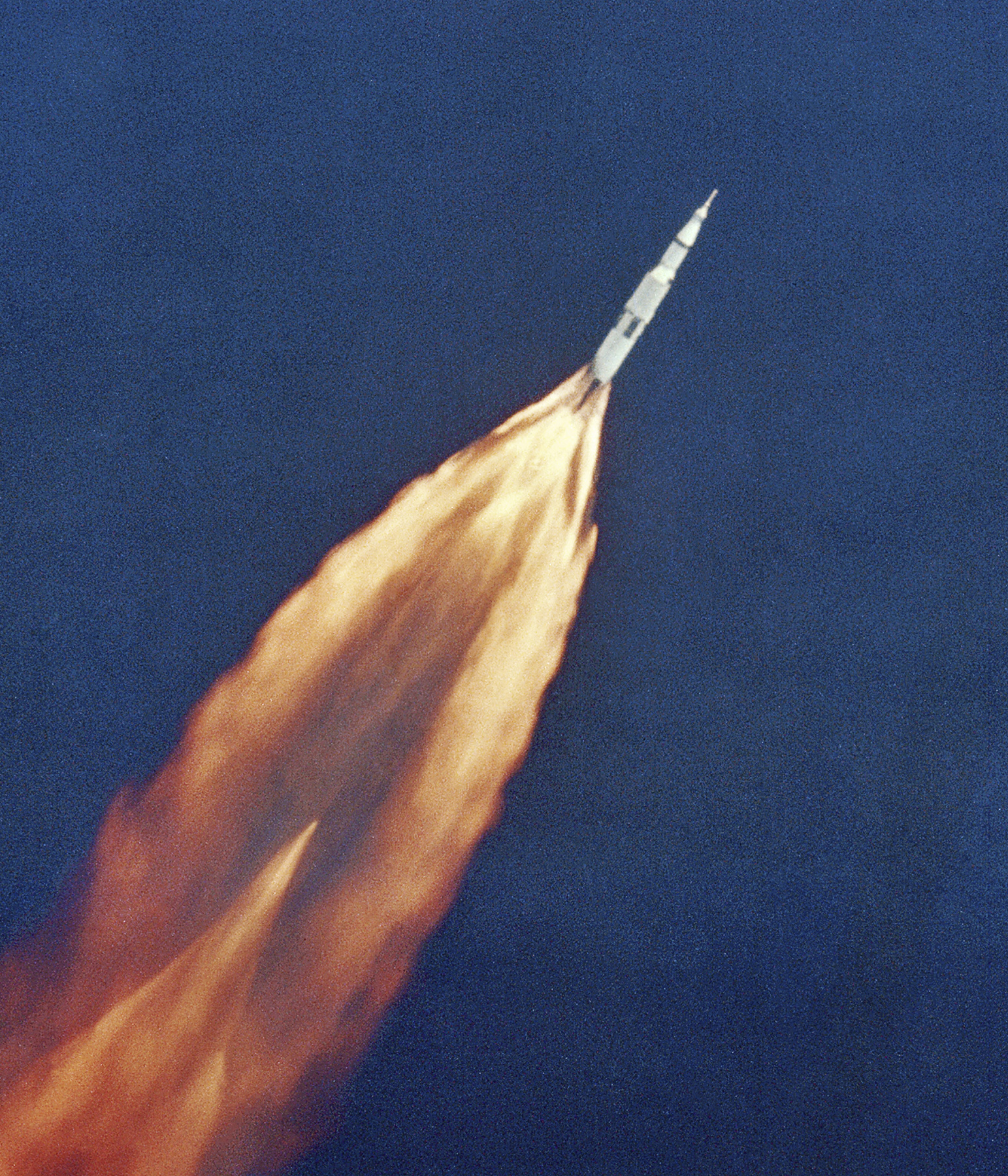
© NASA / SCIENCE PHOTO LIBRARY
The Apollo 11 mission in July 1969 changed human history, landing the first people on the surface of the Moon.
‘Life, forever dying to be born afresh, forever young and eager, will presently stand upon this Earth as upon a footstool, and stretch out its realm amidst the stars.’
H.G. Wells
The history of Venus is perhaps even more puzzling, in part because of the immense difficulty of exploring the planet. Venus is often described as a vision of hell; surface temperatures are high enough to melt lead, and the atmospheric pressure is 90 times that on Earth. Sulphuric acid raindrops fall from its clouds. And yet, long ago, Venus too may have been Earth-like. Perhaps there were once Venusians, before a runaway greenhouse effect took hold and began destroying Venus’s temperate climate around 2.5 billion years ago – although this date is highly uncertain.
Taken together, the stories of the three large terrestrial planets are salutary. If an alien astronomer observed our Solar System from afar, they would classify Mars, Earth and Venus as potentially living worlds, orbiting as they do inside the so-called habitable zone around the Sun – the region within which, if atmospheric conditions are right, liquid water can exist on the surface of the planets. All three worlds may have once been habitable, and all three worlds may have once harboured life, but now only Earth supports a complex ecosystem, let alone a civilisation.
Understanding why Mars and Venus diverged so significantly from Earth over the last 4 billion years will provide great insight into the fragility of worlds and perhaps suggest whether our own good fortune is near-impossible to comprehend or merely outrageous. Planets change. Ours could change at any moment. A stray comet from the frozen Kuiper Belt beyond the orbit of Neptune could put an end to our story. We could also put an end to ourselves. The study of Venus might help us avoid one of the ways by which we could destroy our civilisation, because it shows us what greenhouse gases can do to a world. I think one of the reasons why anthropogenic climate change is so difficult for a certain type of person to accept is that atmospheres seem ethereal and tenuous and incapable of trapping enough heat to modify the temperatures on a planet significantly. For such people I suggest a trip to Venus, where they will be squashed and boiled and dissolved on the surface of Earth’s twin.
The exploration of the planets, then, is not an indulgence. If we want to know how we came to be here we need to understand the histories of the planet that gave birth to us and the system that gave birth to it. We are children of Earth and also children of the Solar System. Understanding our history is important because it places our existence in context. The more we learn about the events that led to the emergence of humans on this planet only a few hundred thousand years ago, the more we are forced to marvel at the sheer unlikeliness of it all. We needed Jupiter and the comets and asteroids and countless collisions and mergers and near-catastrophes stretching back 4.6 billion years. There are valid objections to this way of thinking; it is an objective fact that we are here, and our future should be our primary concern. That may be so, but I argue that a deeper understanding of the evolution of the planets is essential for our continued prosperity and existence on this one. The threat of catastrophic climate change is an obvious example, but there are many other reasons why knowledge is important. There is feedback in human affairs; our collective state of mind affects the decisions we make. To confine our imaginations to the surface of the Earth is to ignore both our immense good fortune and the fragility of our position. A wider knowledge of both will, I believe, help secure a safer and more prosperous future.
No 1
MERCURY
+
VENUS
A MOMENT IN THE SUN
ANDREW COHEN
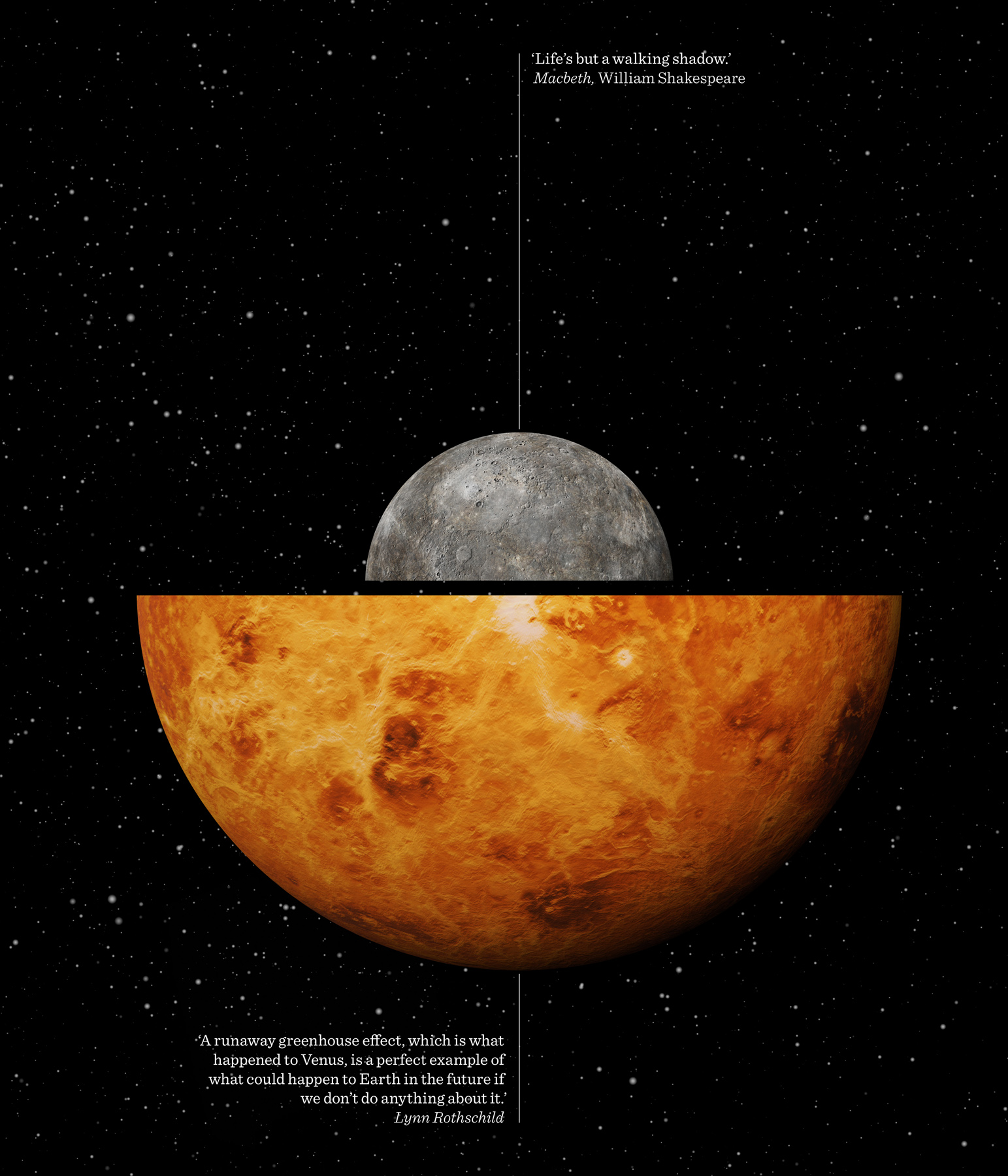
© Shutterstock
DAYS YET TO COME
E arth sits a mere 150 million kilometres from the Sun – not too hot, not too cold, with surface temperatures ranging from minus 88 to plus 58 degrees Celsius. This ‘Goldilocks’ location has created a stability of climate that, despite the best efforts of ice ages and impacts, has allowed life to maintain an unbroken chain for nearly 4 billion years, and yet we know for certain that it cannot last.
Our Sun, like every star in the universe, is far from static. Stars have life cycles of their own and, eventually, the hydrogen fuel that powers the nuclear reactions within a star will begin to run out and the star will enter the final phases of its lifetime. It will expand, cool and change colour to become a red giant. Small stars, like our sun, will undergo a relatively peaceful and beautiful death, which will see it pass through a planetary nebula phase to become a white dwarf, which will cool down over time to leave a brown dwarf. Life on Earth has prospered through our sun’s middle years, but these optimum conditions are waning. At first the changes will be invisible, but a billion years from now they will be obvious to any life forms left on the planet – an immense sun, filling the sky, will warm and transform itself and the Earth that it shines upon. The Sun is both the giver and the taker of life on our planet.
‘What has been is what will be, and what has been done is what will be done, and there is nothing new under the sun.’
Ecclesiastes 1:9
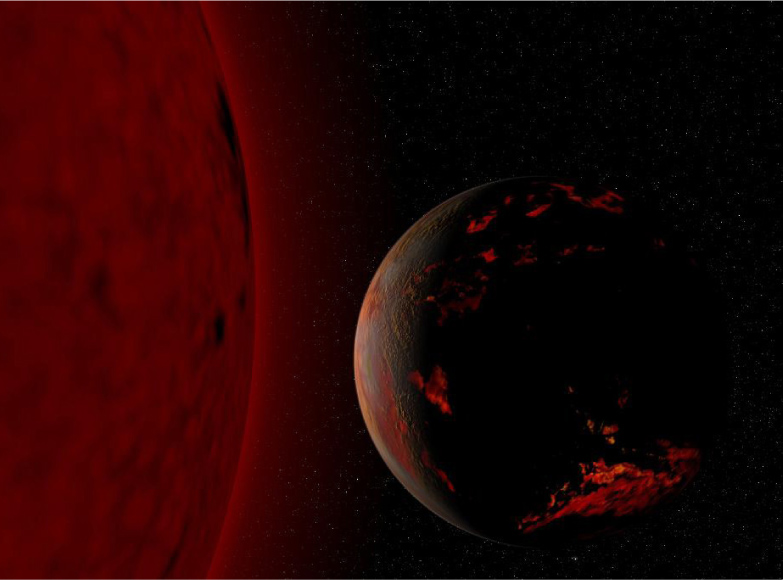
© Fsgregs Wikimedia commons
It is one of the great paradoxes of the Universe that as the life of a star like ours begins to wane, its size and luminosity will increase. A rise in luminosity of just 10 per cent will see the average surface temperature on Earth rise to 47 degrees Celsius instead of the 15 degrees Celsius that it is today. The effect of this rise in temperature manifests in a lifting of vast amounts of water vapour from the oceans into the atmosphere, creating a greenhouse effect that could quickly and rapidly run out of control, evaporating the oceans and sending the surface temperature skyrocketing. Astrobiologist David Grinspoon explains,
The greenhouse effect is the name we give to the physical process by which planets heat up through the interaction of their atmospheres and solar radiation. Solar radiation comes in what we call the visible wave lengths, primarily wave lengths that we can see, and most atmospheric gases are very transparent to visible radiation. So light from the Sun comes through pretty much unimpeded by an atmosphere and reaches the surface of a planet. Then the surface of the planet reradiates that radiation in infrared, because planets are much cooler than the Sun. And that means they radiate at much longer wave lengths – what we call infrared. That infrared radiation doesn’t make it through an atmosphere so easily. Some of the atmospheric gases, the ones we call greenhouse gases, block infrared radiation and so therefore the more of those greenhouse gases that are in a planet’s atmosphere the harder it is for that surface radiation to make it back out into space and the more that planet will heat up.
Estimates of the timescale that will see our oceans disappear vary massively, and are heavily influenced by a multitude of factors, but few are in doubt that by the time our planet reaches its 8-billionth birthday (in 3.5 billion years’ time) the end will be in sight. With temperatures heading above a thousand degrees, life will have long disappeared from a surface that is beginning to melt under the burning Sun.
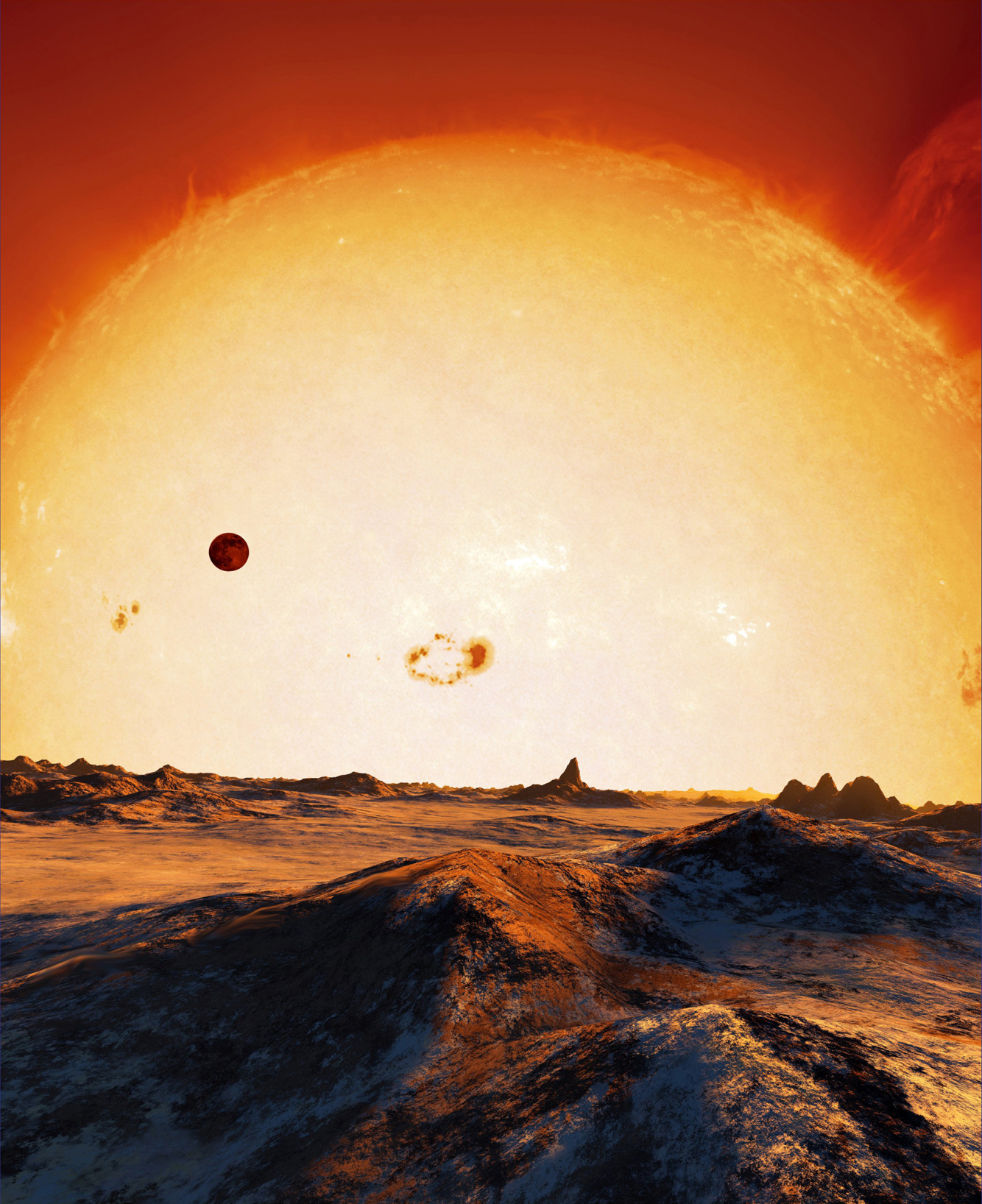
© DETLEV VAN RAVENSWAAY / SCIENCE PHOTO LIBRARY
These computer artworks show how the Earth might appear in 5–7 billion years’ time. As the Sun swells and becomes a red giant, temperatures on our planet’s surface will soar, making life untenable.
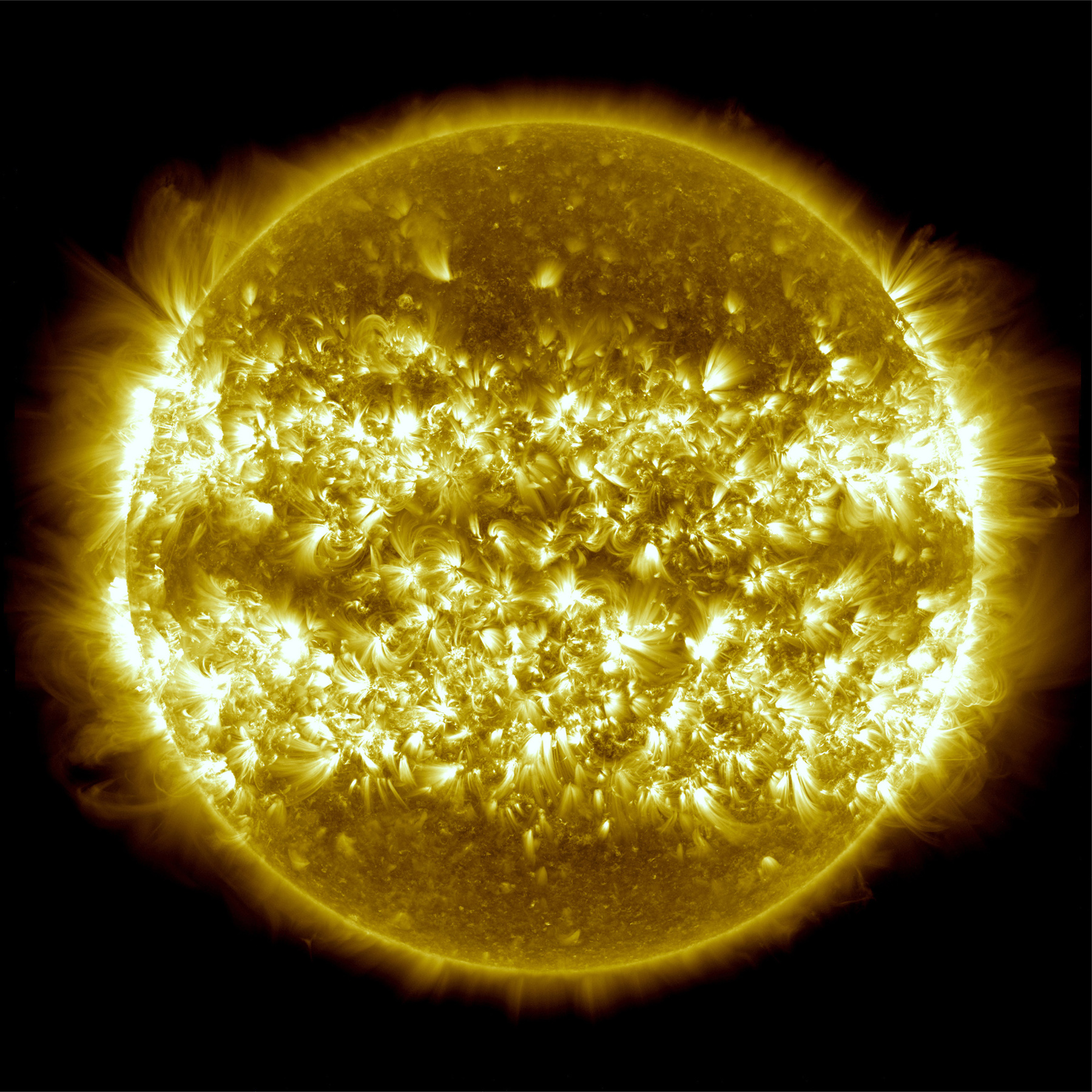
© NASA/GSFC/SDO
Our Sun is far from static, and NASA’s Solar Dynamics Observatory regularly and consistently tracks its rise to solar maximum. This composite image shows 25 shots taken between 16 April 2012 and 15 April 2013, which reveal an increase in solar activity.
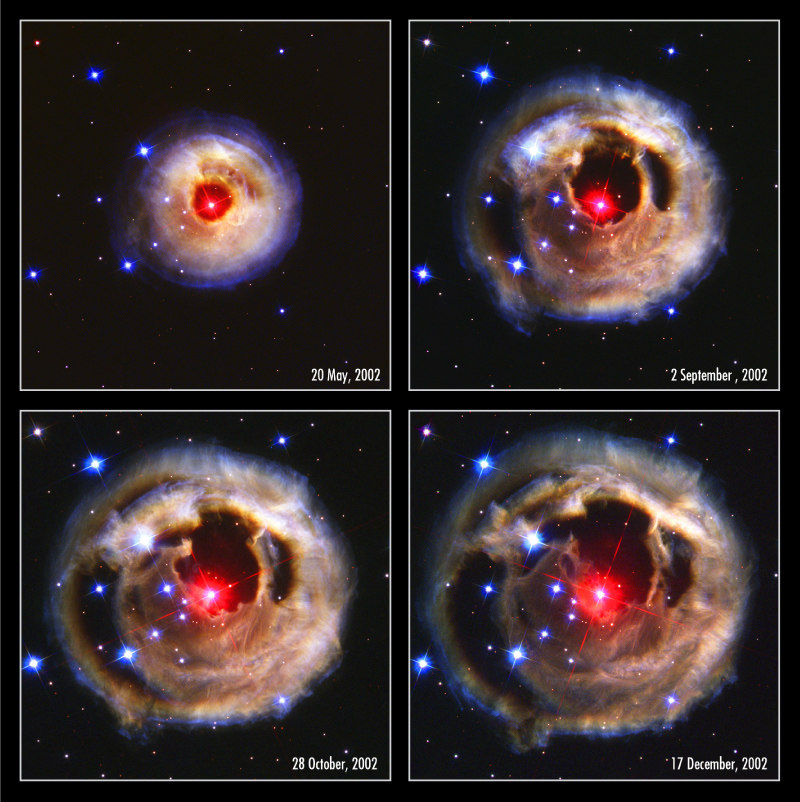
© MSFC
This series of photos, captured by the Hubble Space Telescope in 2002, demonstrates the reverberation of light through space. A burst of light from an unusual star in the constellation spreads through space and reflects off surrounding dust. During this activity, the red star at the centre brightens to more than 600,000 times the Sun’s luminosity. It will continue to expand before eventually disappearing.
Astrobiologist David Grinspoon on the greenhouse effect
‘The greenhouse effect gets a bad rap these days and that’s understandable because we are tweaking it in ways we don’t fully understand, in changing the climate balance that we depend upon on this planet.
‘And yet it’s important to understand that the greenhouse effect is an essential part of what makes the Earth a habitable planet. Without some measure of greenhouse effect, Earth would be completely frozen over and life would not be possible on this planet.
‘Thirty degrees or so of a greenhouse effect on a planet like the Earth is absolutely wonderful and crucial and what keeps us alive, what makes Earth such a great place for life because it keeps us in that liquid water zone.
‘But, of course you can have too much of a good thing, look at Venus for a possible image of Earth’s future, if we’re not careful.’
Moving even further into the future the outlook becomes bleaker. As the Sun enters old age it will grow into a red giant, engulfing the Earth within its expanding atmosphere. Moonless, lifeless and perhaps reduced to its inner core, our planet and the civilisations it once harboured will be nothing but a distant memory, etched in the atoms that made us all as they are dispersed amongst the cosmos.
For planet Earth, the clock is ticking and time is slowly running out, but ours is far from the only world to enjoy its moment in the sun. Across the history of our Solar System, stretching deep into its ancient past and reaching far into its future, we see stories of worlds in a constant battle with our ever-changing star. Close in, ancient worlds such as Mercury, which long ago lost their fight with the Sun, are taunted by views of Earth, and what might have been. Further out and even hotter, Venus circles, shrouded in a choking cloak of cloud, and even further beyond the Earth, Mars sits cold and barren. Beyond these planets, frozen worlds await, huddled in perpetual hibernation; anticipating the moment when the warmth of the Sun reaches out far enough, with sufficient heat, to trigger a first spring. On that day, mountains of ice will melt, rivers of water will flow, and where there was once only bleakness, in the distant future on planets once frozen and lifeless we might find a place that looks very much like home.

